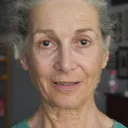Stay in the Loop
BSR publishes on a weekly schedule, with an email newsletter every Wednesday and Thursday morning. There’s no paywall, and subscribing is always free.
Music of the (bio)spheres
Network for New Music presents ‘Musical Ecologies’

The venue at the Discovery Center puts nature in your mind and heart as you gaze through large picture windows at a reservoir which is now a stopover for more than 170 species of migrating birds. As the musicians were warming up their instruments, the audience streamed in after enjoying the lookout over the reservoir on a beautiful, sunny afternoon—a fitting start to Network for New Music’s Musical Ecologies.
Linda Reichert, artistic director emeritus of the Network and currently a member of the advisory board, gave an impassioned speech about her new role as a climate activist, warning the audience that the earth has already reached the environmental state of sounding the fifth alarm of a five-alarm fire. She hoped the contemplation of the beauty of form in both nature and music would inspire change.
Unusual sounds
Anna Thorvaldsdottir’s Reflections explored long sustained notes and harmonics with tiny clusters of fast notes passing like a fish jumping out of water. Network regulars Thomas Kraines (cello), Hirono Oka (violin), and Burchard Tang (viola) always seem to enjoy the challenges of modern compositions, and they pursued unusual effects with nasal and metallic sounds as they took their bows closer and closer to the bridges of their instruments.
Paul R. Demers took Felicity Wilcox’s People of this Place as a vehicle for exploring almost every aspect of the bass clarinet’s sound-making. Demers, bass clarinet for the Philadelphia Orchestra, made the gigantic wind instrument resonate, rumble, squeal, and click its keys. Wilcox sprinkled her piece with occasional Grieg-like melodies which Demers played with delicate clarity.
Alchemy and Oshta
The picture windows kept getting my attention because birds and people were constantly coming into view. As Kraines and Susanna Loewy played Alchemy for alto flute and cello, by Jonathan Bailey Holland, the soft low tones of the flute seemed to accompany a flurry of birds at the feeder in the window behind Loewy. Kraines used his bow “col legno,” taking the wood of the bow to strike the strings and, at one point, turning the cello and using it as a drum. The duo played through a series of dissonant intervals and ended on the same pitch—resolving all the dissonances in one fell swoop.

The striking contrast of the more classically harmonic violin piece, Oshta by Chickasaw member Jerod Impichchaachaaha’ Tate, was brought out beautifully by Hirono Oka as she sailed through double stops with moving voices, phrasing each line carefully to its apex and back, ending on the single harmonic note on which the piece had begun.
Stop with the rocks
Pauline Oliveros’s Rock Piece seemed to be thrown in as an afterthought. (If you have never heard Rock Piece, you might enjoy your first opportunity to beat rocks together, but by the time you are handed rocks again for the next performance, you may sigh like a kindergartner asked to repeat an easy task.) Network artistic director Thomas Schuttenhelm asked the audience to “perform” Rock Piece as a prelude to Ken Steen’s in afterness for Demers’s bass clarinet, Kraines on cello, Schuttenhelm’s electric guitar, and quadrophonic sound.
What happened was a bit of a train wreck as the audience refused to stop clicking their rocks when the commissioned premiere began. Perhaps it did, however, reflect composer Ken Steen’s view that in afterness represents the contemplation and recovery after a traumatic event, and the sounds of his piece were definitely soft and dreamy. Again, Kraines and Demers seemed to take Steen’s score to pull new sounds out of their instruments, not hesitating to explore as they reacted to the sounds of the electric guitar and the instrumental and concrete sounds coming from the speakers.
Can Pythagoras’s theory of planets moving to a musical pattern be reversed to apply musical patterns to realign our ailing planet? Perhaps not, but sounding the climate change crisis through music could help to change our behavior towards the environment.
What, When, Where
Musical Ecologies. Anna Thorvaldsdottir, Reflections; Felicity Wilcox, People of this Place; Jonathan Bailey Holland, Alchemy; Jerod Impichchaachaaha’ Tate, Oshta; Pauline Oliveros, Rock Piece; and Ken Steen, in afterness. Susanna Loewy, guest alto flute; Paul R. Demers, bass clarinet; Thomas Schuttenhelm, electric guitar; Hirono Oka, violin; Burchard Tang, viola; Thomas Kraines, cello; Ken Steen, media/electronics. Network for New Music. February 23, 2020 at the Discovery Center, 3401 Reservoir Drive, Philadelphia; and February 24 at 7:30pm at the Icebox Project Space, 1400 N. American Street, Philadelphia. networkfornewmusic.org.
The Discovery Center is an ADA-compliant facility.
Sign up for our newsletter
All of the week's new articles, all in one place. Sign up for the free weekly BSR newsletters, and don't miss a conversation.

 Margaret Darby
Margaret Darby